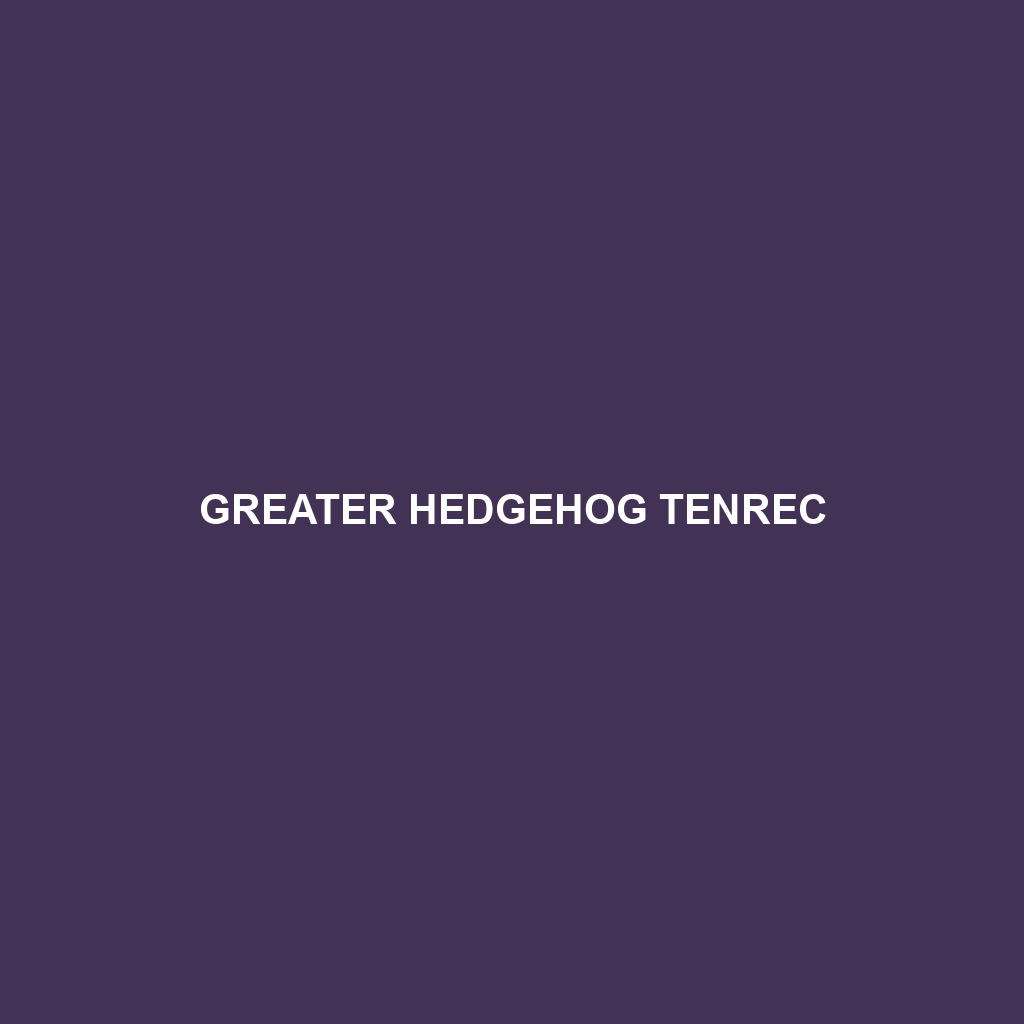Greater Hedgehog Tenrec (Setifer setosus) Detailed Description
The Greater Hedgehog Tenrec (Setifer setosus) is a fascinating small mammal native to Madagascar. With its spiny coat and hedgehog-like appearance, this tenrec has captured the interest of many wildlife enthusiasts. Despite its resemblance to hedgehogs, the Greater Hedgehog Tenrec is part of the diverse and unique Tenrecidae family, which showcases the incredible biodiversity of Madagascar.
Physical Characteristics
Size: Adult Greater Hedgehog Tenrecs typically measure about 14 to 18 cm (5.5 to 7 inches) in length, not including the tail, which is relatively short and stumpy. They weigh between 200 to 300 grams (7 to 10.5 ounces).
Coloration: Their body is covered in a dense layer of spines that are cream to yellowish-brown at the base and dark brown to black at the tips. The underparts are generally softer and grayish in color.
Special Features: One of the most notable features of the Greater Hedgehog Tenrec is its defensive spines. These spines are modified hairs that provide protection against predators. When threatened, the tenrec can roll into a tight ball, presenting its spines outward to deter attackers, similar to a hedgehog.
Behaviors
Social Interactions: Greater Hedgehog Tenrecs are generally solitary animals. They are nocturnal and spend the day resting in burrows or dense vegetation. Although they are primarily solitary, they may occasionally be seen foraging in pairs or small groups.
Feeding Habits: These tenrecs are omnivorous and have a varied diet that includes insects, small vertebrates, fruits, and plant material. They use their keen sense of smell to locate food, and their sharp teeth to capture and consume their prey.
Ecological Roles: As insectivores, Greater Hedgehog Tenrecs play an important role in controlling insect populations. They also contribute to seed dispersal through their consumption of fruits, aiding in the propagation of various plant species.
Habitats and Adaptations
Habitats: Greater Hedgehog Tenrecs inhabit a wide range of environments in Madagascar, including forests, savannas, and shrublands. They are highly adaptable and can thrive in both humid and dry regions.
Adaptations: Several adaptations allow the Greater Hedgehog Tenrec to survive in its varied habitats. Its spiny coat offers protection, while its nocturnal habits help it avoid daytime predators. The tenrec’s ability to enter a state of torpor during adverse conditions, such as food shortages or extreme temperatures, is another vital adaptation.
Conservation Status
According to the International Union for Conservation of Nature (IUCN), the Greater Hedgehog Tenrec is currently listed as Least Concern. However, like many Malagasy species, it faces threats from habitat destruction due to deforestation and human encroachment. Conservation efforts are essential to ensure that this unique species continues to thrive in its natural habitat.
Fun Facts
Despite their hedgehog-like appearance, Greater Hedgehog Tenrecs are more closely related to other tenrecs and afrotherian mammals like elephants and aardvarks than to true hedgehogs.
When threatened, in addition to rolling into a ball, these tenrecs can produce a variety of sounds, including grunts and clicks, to deter predators.
They have a unique reproductive strategy where the females can give birth to large litters of up to ten offspring, which is quite high for a mammal of their size.
The Greater Hedgehog Tenrec is a remarkable example of Madagascar’s unique wildlife. Its intriguing characteristics and behaviors make it a captivating subject for study and conservation efforts.
